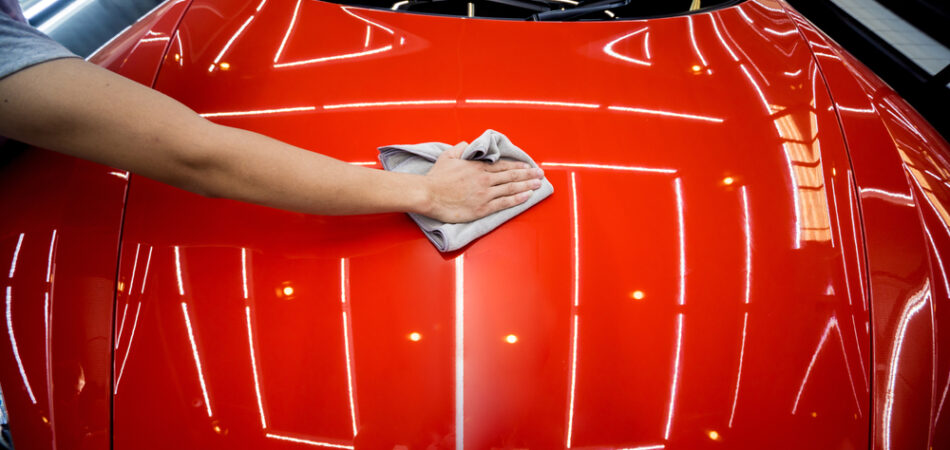Leading Ceramic Coatings San Jose Solutions for Automotive Excellence
Introducing the Scientific Research Behind Ceramic Coatings: How Does It Job and Why Is It Above Traditional Choices?
Ceramic coverings have been gaining appeal in different markets for their extraordinary performance and resilience. Understanding just how ceramic layers job and why they exceed conventional choices is critical for those seeking to improve the durability and resilience of their materials.
The Chemistry of Ceramic Coatings
In comprehending ceramic finishings, delving into the detailed chemistry behind their make-up is vital for understanding their functionality and toughness. Ceramic coatings are primarily made up of silicon dioxide (SiO2), which creates a strong and safety layer when put on various surfaces. This chemical framework gives remarkable resistance to warm, chemicals, and deterioration, making ceramic layers highly demanded for a variety of applications.
The chemistry behind ceramic coatings includes the formation of covalent bonds in between silicon and oxygen atoms, producing a rigid network that boosts the coating's sturdiness and longevity. Additionally, the visibility of other components such as zirconium, light weight aluminum, and titanium further improves the coating's residential or commercial properties, using raised hardness and bond to surface areas.
Recognizing the chemical composition of ceramic finishings enables the modification of formulations to fit certain demands, whether it be for automotive, industrial, or domestic functions. By harnessing the power of chemistry, ceramic finishings remain to pave the way for exceptional defense and performance in numerous sectors.
Advantages of Ceramic Coatings

As an outcome, ceramic finishings make cleansing and preserving surface areas much easier and much less lengthy. Generally, the plethora of benefits offered by ceramic finishings make them an exceptional option contrasted to conventional finish techniques.
How Ceramic Coatings Bond
Ceramic finishings bond to surfaces through a process that involves molecular attachment and chemical communications. When a ceramic layer is used to a surface area, it develops a strong bond by chemically adhering to the surface area at a molecular degree.
In addition, the chemical communications in between the ceramic finish and the surface even more enhance the bond. ceramic coatings san jose. These interactions permit the ceramic layer to develop a smooth and continual layer on the surface area, supplying outstanding protection and sturdiness. Unlike conventional layers that may sit on the surface without totally bonding, ceramic finishes develop a permanent bond that is immune to chemicals, UV rays, and extreme environmental conditions

Basically, the bonding system of ceramic layers makes certain a reliable and lasting protective layer that exceeds traditional coating choices. This superior bond adds to the durability, scratch resistance, and longevity of ceramic finishes, making them a preferred selection for various applications.
Longevity of Ceramic Coatings
The phenomenal longevity of ceramic coatings comes from their durable molecular adhesion and chemical communications with surface areas, making sure a resilient safety layer that surpasses standard covering choices. Once used, ceramic coverings form a strong bond with the substratum, creating a durable obstacle against various ecological stress factors such as UV radiation, chemicals, and abrasions. This bond is so protected that it can stand up to the roughness of daily use without degrading click here for more or degrading rapidly.
Unlike typical finishings that might weaken in time, ceramic layers maintain their stability for an extended duration, giving resilient defense for the underlying surface. The solid molecular framework of ceramic coatings resists cracking, fading, and peeling, making sure that the surface area stays secured and cosmetically pleasing for several years to come. This resilience not just lowers the need for constant reapplications however likewise conserves time and cash over time. On the whole, the outstanding sturdiness of ceramic coverings makes them a premium selection for shielding a vast array of surface areas in numerous applications.
Ceramic Coatings Vs. Traditional Alternatives
In contrast to conventional finishing techniques, ceramic layers offer a distinctive blend of look at this now longevity and protective capabilities that set them apart in different surface defense applications. Traditional choices such as wax or sealers offer a short-lived layer of protection that can wear away promptly, calling for frequent reapplication. On the other hand, ceramic finishes form a strong bond with the surface, developing a irreversible or semi-permanent barrier that is extremely immune to abrasion, chemicals, UV rays, and extreme temperature levels.
In addition, ceramic coatings offer superior hydrophobic residential properties contrasted to conventional finishings. The hydrophobic nature of ceramic finishings triggers water to bead up and roll off the surface, bring dirt and impurities with it. This self-cleaning result aids to maintain the surface's tidiness and gloss for prolonged periods, decreasing the demand for frequent maintenance.
Additionally, ceramic finishes have a thicker layer contrasted to standard alternatives, giving improved scratch resistance and defense against small effects. This sturdiness guarantees long-lasting efficiency and aids protect the aesthetic allure of the treated surface area for a prolonged duration.
Final Thought
Finally, the scientific research behind ceramic finishes depends on their chemical structure and bonding properties, making them above standard options. The benefits of ceramic coverings include raised toughness and protection for surfaces. By recognizing how ceramic finishes work and their advantages over typical options, one can make educated choices when considering finishing alternatives for various applications.
Unlike standard layers that may sit on the surface without totally bonding, ceramic coatings create a long-term bond Full Article that is immune to chemicals, UV rays, and harsh environmental conditions.
The phenomenal longevity of ceramic finishings stems from their durable molecular attachment and chemical interactions with surfaces, making sure a sturdy safety layer that surpasses conventional finish alternatives.Unlike standard coverings that may break down over time, ceramic coatings preserve their honesty for an extensive duration, supplying durable defense for the underlying surface.In contrast to traditional layer methods, ceramic coatings use an unique mix of durability and safety capacities that establish them apart in numerous surface area protection applications. By comprehending exactly how ceramic finishings job and their advantages over standard choices, one can make enlightened choices when considering covering alternatives for different applications.